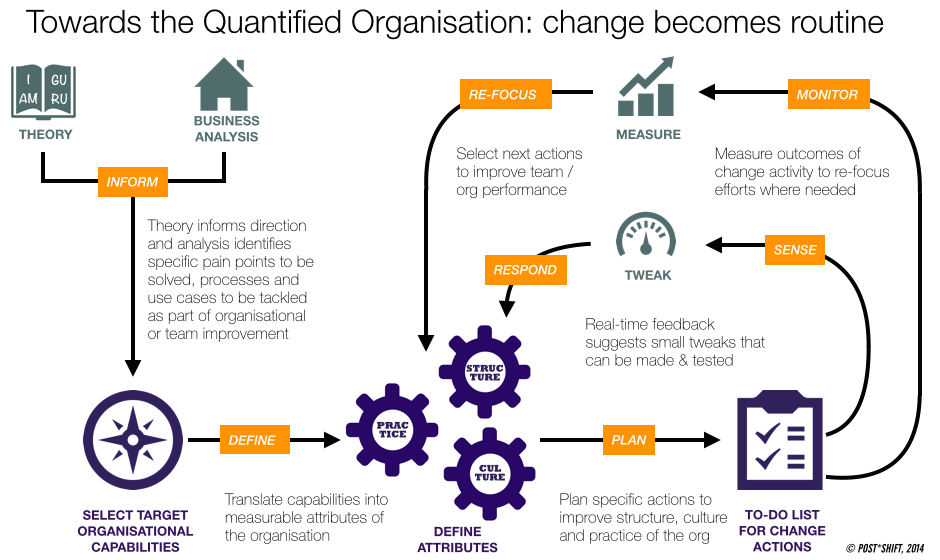As a contribution to #WOLWeek, I would like to share some insights into one of our ongoing projects – building a knowledgebase that can support people building 21st Century Businesses. We believe success in the future requires organisations to consciously rework their structures, culture and general practice, not just individual work processes, and even to throw away old templates and build new ones that bring out the organisational capabilities needed to compete in today’s world. Market dynamics are probably the most effective pressure for change, and for companies to compete under these new circumstances everything from supply chains to customer relations will need to embrace digital transformation. Technology is both a challenge and a solution for responding to these challenges, including new ways of governing organisations. Professor Gary Hamel calls this an IT-enabled transformation, which will in time upend traditional structures and processes. But as Dan Pontefract pointed out, all this talk of the managerial transformation still needs to face the how. As practitioners, the ‘how’ question is the one we like best. We not only focus on how people work, but how the whole operating model and how it can be enhanced by the affordances of social technology and associated behaviours. We don’t claim to have a one-size-fits-all model that we can sweep in and change your operations with. Instead, as my colleague Cerys wrote earlier this week, our thinking is moving from consulting to enabling and whilst we have tools, methodologies and advice that can help, our role is really to support smart business leaders and change agents in the broadest sense with what they need to accelerate positive change in their organisations. One thing we can offer is that we can read all the things so you don’t have to, so both us and our clients can stay on top of emerging ideas and good practice in their respective fields.
ELEMENTS OF A KNOWLEDGEBASE FOR ORGANISATIONAL TRANSFORMATION
Lately we have been building a knowledgebase with the purpose of providing a toolkit to help people hack their own organisations. For now, it serves as an internal reference point but we hope to make it more widely available next year. It is an on-going exercise of diving into theories, thought-pieces and case studies related to building 21st Century Business. One element in the knowledgebase is our diagnostic framework, which was developed through research informed by both theoretical ideas and practical insights from projects. The framework is organised around three main areas; structures (how work is organised), practices (ways of doing work) and culture (how people are engaged with work), and can help organisations define and steer towards their desired future state for these areas. Supplementary to the framework, the knowledgebase has a growing catalogue of managerial concepts that can help achieve the attributes defined in the framework. The managerial concepts are distilled from our research and developed into blueprints, ways of working and tools. For example CLOUs (Morning Star) and Energised roles (Holacracy) are two different managerial concepts that enable decentralised responsibility and are easy to try out in small teams. While both are a part of larger methodologies, the core of concepts can be applied in various forms of organisation.
We are also creating a catalogue of organisational designs, ranging from Henry Mintzberg’s archetypes to newer ideas from John Kotter and others, which we have deconstructed into building blocks that highlight the capabilities and functionalities required. Although useful, this process has made us aware of gaps in existing models that cannot solve some of our clients’ problems. Hence, with our team’s heritage as social technology pioneers and building community architectures, we are also been exploring how the intersection between software and organisational structure can provide solutions to fill those gaps. As a result, the catalogue of organisational designs is a combination of existing models’ building blocks as well as components that we have co-created, typically in projects, to allow for more flat or flexible operations. We use this method to equip executives and leaders with a grounded understanding of the impact that structure has, as well as provide a space and artefacts that help revise the current model and different scenarios. These days, we don’t tend to deliver strategy reports and presentations, but knowledge resources, tools and methods that can help people within the organisation own its improvement. From the new year, we will be working on opening up some of our knowledgebase, but until then, please sign up for our weekly newsy linklog.


